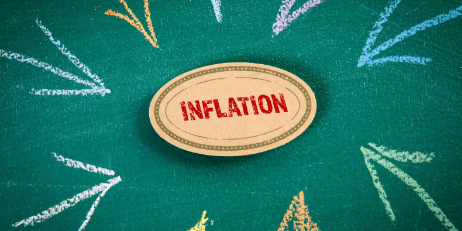
Still Elevated: How Inflation’s Sticky Grip Threatens Your Wealth
The Illusion of Progress: What November’s Inflation Numbers Don’t Show
Every headline tells you inflation is “cooling,” but is it really? The Federal Reserve’s personal consumption expenditures (PCE) index—the so-called “gold standard” for inflation metrics—nudged up by just 0.1% in November. At first glance, this might look like progress. Dive deeper, and you’ll see an economy still grappling with entrenched inflationary pressures. The year-over-year core PCE increase of 2.8%, though below forecasts, remains far above the Fed’s arbitrary 2% target.
The question you should ask is this: why are we celebrating mediocrity in the face of a financial system that remains fragile and dangerously overleveraged?
Sticky Inflation and Shrinking Incomes: The Silent Threat
Look past the headlines, and the reality for average Americans is bleak. Personal incomes fell by 0.4% in November, compounding the pressures of rising living costs. For families already struggling to balance budgets, this decline isn’t a statistic—it’s a direct hit to their purchasing power and savings.
Meanwhile, the stock market’s erratic behavior is a symptom of deeper structural imbalances. Despite mixed performances, one thing is clear: markets are reacting to uncertainty, not confidence in the Fed’s policies. Can the Federal Reserve, with its history of missteps, be trusted to steer us out of this quagmire?
The Federal Reserve’s Dilemma: Between Inflation and Recession
The Fed has painted itself into a corner. By cutting rates by 25 basis points, Chair Jerome Powell and his team are trying to strike a balance—tamping down inflation without triggering a recession. Powell’s words at his December press conference revealed as much:
“We’re not on a pre-set course... The committee will assess incoming data and the balance of risks.”
Translation? The Fed is flying blind, reacting rather than leading. This reactive approach does little to address the systemic issues underpinning our monetary system. Inflation isn’t just about rising prices—it’s about the decades-long erosion of purchasing power under a fiat currency regime that prioritizes debt and consumption over savings and stability.
The Bigger Picture: Why Inflation Will Remain a Persistent Threat
Inflation’s “stickiness” reflects more than volatile food and energy prices. It’s baked into the DNA of a fiat currency system dependent on endless money printing and debt monetization. November’s numbers may look like a breather, but the long-term trajectory is clear: as central banks lose credibility, inflation becomes a way of life.
Is this the system you want to rely on to secure your future?
A Call to Action
The financial system is unraveling, and the Federal Reserve’s playbook isn’t going to save you. The time to act is now. Here’s how you can start:
- Protect Your Savings: Download my free book, "Seven Steps to Protect Your Bank Accounts," to learn actionable strategies for safeguarding your wealth. Get your copy here.
- Educate Yourself: Get Bill Brocius’ hardcover book, "The End of Banking as You Know It," for only $19.95 and discover why traditional banking is doomed. Order your copy here.
The fight for financial independence starts with knowledge. Are you prepared to take the first step?










